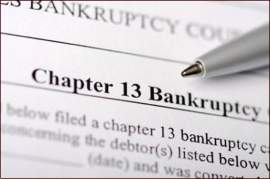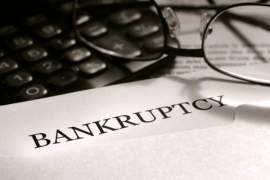
Facts to Know About Free Legal Services

Related Forms
Schedule B - Personal Property
Schedule C - Property Claimed as Exempt
Schedule D - Creditors Holding Secured Claims
Schedule E - Creditors Holding Unsecured Priority Claims
Schedule F - Creditors Holding Unsecured Nonpriority Claims
Schedule G - Executory Contracts and Unexpired Leases
Schedule I - Current Income of Individual Debtor(s)
Schedule J- Current Expenditures of Individual Debtor(s)
Summary of Schedules (Includes Statistical Summary of Certain Liabilities)
View All
When an agency identifies itself as a "bankruptcy service," the information seeker should definitely be wary. Numerous bankruptcy services may not exactly be clear as to what they are providing, or may nonetheless indicate as much but leave the terms of service ambiguous or curiously absent, so that what is billed as a "free bankruptcy service" may be anything but once one has finished using it and the actual bill arrives.
It can be difficult to know which paid bankruptcy services to trust, let alone a free service. Still, for debtors who don't really have much of an option in facing tons of debt and relatively low levels of income, a free bankruptcy service may be all they are willing or able to manage. Thankfully, there is hope for these people to gain access to legal services, and for little to no cost to boot.
Below are some bankruptcy services that may be available in an individual's area, some of which give consideration to one's socioeconomic status:
One of the most logical places to find a free bankruptcy service would be to go through public channels to solicit legal assistance. Granted, such a service is only free to prospective clients, as these avenues subsist on tax dollars and charitable donations. Still, as far as these petitioners are concerned, the benefits justify the means.
Federal and state agencies run their own bankruptcy services as conduits of civil aid for disaffected Americans. The Legal Services Corporation, for example, is a non-profit Federally-funded organization offering grants to legal services agencies across the nation that are then funneled down to individual applicants, many of whom are women, economically challenged and/or minorities.
Speaking of disadvantaged populations, certain financial breaks may be offered to filers in consideration of their circumstances. Of course, not every free legal program authorized in this vein is necessarily going to be a bankruptcy service. Some of these systems of relief may be contingent on extreme situations, such as women who are victims of abuse or who have been diagnosed with/treated for breast cancer. Nonetheless, for older Americans and people who served in the U.S. Armed Forces, irrespective of race, gender, or health, free bankruptcy services may be available.
Some services may be free of charge, but will come from individuals rather than whole organizations. Of course, a particular bankruptcy service may be the product of a partnership or a subset of a public agency. Just the same, individual attorneys at law may offer their services pro bono, working for citizens' good and not asking for a flat fee or hourly rate. Seeing as there is such a high demand for bankruptcy services with the way our nation's economy continues to limp along, pro bono representation will continue to be requested in high numbers.
NEXT: Learn About Foreclosure Attorneys




















